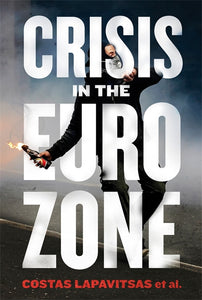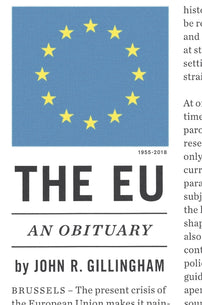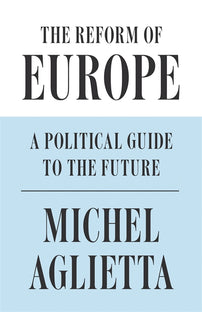Europe and the class divide
While intellectual and economic elites support the European Union in its present form, the less well-to-do reject it, Thomas Piketty reminds us in his column in Le Monde. But there is no fatality to this. The evil is deep and long-standing. In all referendums held over the past twenty-five years, the working classes have systematically expressed their disagreement with the European construction proposed to them, while the richer and privileged classes have supported it.

In the referendum on the Maastricht Treaty in 1992, the 60 per cent of voters with lower incomes, assets or educational level voted against, while the 40 per cent in the higher bracket supported it, in sufficiently large proportion for the yes vote to win by a small margin (51 per cent). The same story with the proposed constitutional treaty of 2005, except that this time only the upper 20 per cent voted yes, the lower 80 per cent voted no, resulting in a clear victory for the latter (55 per cent). And, again, with the Brexit referendum in 2016: the upper 30 per cent enthusiastically supported staying in the EU, but since the lower 70 per cent preferred to leave, the latter won with 52 per cent of the votes.
How can we explain the fact that votes on the European Union continue to show such a marked class divide? A result that is all the less self-evident, given that voting structures for the different parties have long since ceased to be such a clear reflection of class, with all three dimensions of social cleavage (education, income, assets) pulling in the same direction. Since the 1970s and 1980s, the more highly educated parts of the electorate have shifted markedly towards left-wing parties in both Britain and France, while those with the highest income and wealth continue to give stronger support to right-wing parties, themselves in a process of recomposition. On the other hand, in the European votes of 1992, 2005 and 2016, the intellectual and economic elites both left and right found themselves supporting the EU as it exists, while the lower classes both left and right rejected it.
[book-strip index="1" style="display"]‘The European Union, as it has been built over the past decades, functions objectively for the benefit of the most privileged’
The privileged classes have an explanation for this state of affairs: the working classes are said to be nationalist and xenophobic – even backward. Except that working-class xenophobia is no more natural than that of the elites. There is a much simpler explanation: the European Union, as it has been constructed over the past decades, is based on generalized competition between territories, on fiscal and social dumping that favours the most mobile economic actors, and it operates objectively for the benefit of the most well-off. Unless the EU takes strong symbolic measures to reduce inequalities, such as a common tax on the richest that enables tax on the poorest to be lowered, this situation will continue.
The Hayekian vision is still strong
This opposition between different visions of Europe is not new, and it is worth putting it in historical perspective. In 1938, young activists in the United Kingdom launched the Federal Union movement. Quickly joined by university figures such as William Beveridge and Lionel Robbins, this inspired the proposal for the creation of a Franco-British federal union – offered by Churchill in June 1940, but rejected by the French government which had taken refuge in Bordeaux and preferred to give full powers to Pétain. It is interesting to note that a group of British and French academics met in Paris in April 1940 to study the functioning of a possible federal union, first at the Franco-British level and then enlarged to the European, without reaching agreement.
‘As early as the late 1930s, sociologist Barbara Wootton proposed a Europe-wide income and estate tax, with a rate rising to 60 per cent, coupled with an upper ceiling on income and inheritance.’
The vision of a European union most marked by economic liberalism was that of Hayek. His would be simply a trading union based on the principles of competition, free trade and monetary stability. Robbins followed this line quite closely, though also envisaging the possibility of a European budget, and in particular a European inheritance tax in case free trade and the free movement of people were not enough to spread prosperity and reduce inequality. Other members of the group had views much closer to democratic socialism, such as Beveridge, a champion of social insurance, and sociologist Barbara Wootton, who proposed a European income and inheritance tax, rising to a rate of 60 per cent, coupled with an upper ceiling on income and inheritance.
The April 1940 meeting broke up with a disagreement on the economic and social content of the proposed federal union. Yet the debates generated by the Federal Union movement had an echo across Europe. Altiero Spinelli, a Communist imprisoned in Mussolini’s jails, used it as a basis for his 1941 Manifesto for a Free and United Europe, or the Ventotene Manifesto (named after the island where he was imprisoned).
However, there is no reason why today’s Europe should remain imbued with a Hayekian vision. The European flag is instrumentalized today by people who make use of it to impose their class policy. But we should remember that Europe could also organise itself differently, as Wooton, Beveridge, and even Robbins had already held almost eighty years ago.
Thomas Piketty is Centennial Professor at the London School of Economics, and a professor at the École des hautes études en sciences sociales.
Originally published in Le Monde
Translated by David Fernbach
[book-strip index="2" style="display"]



